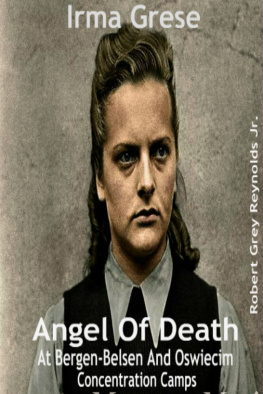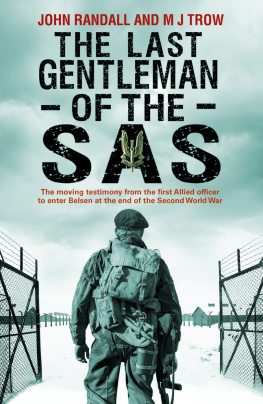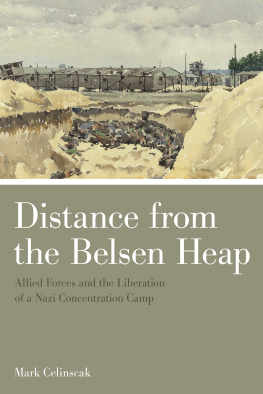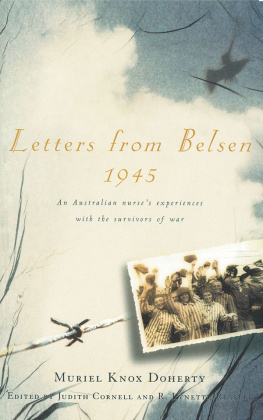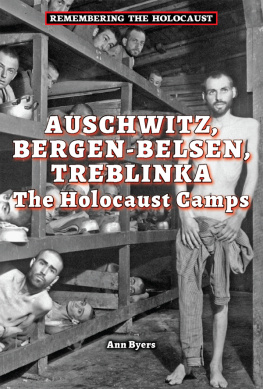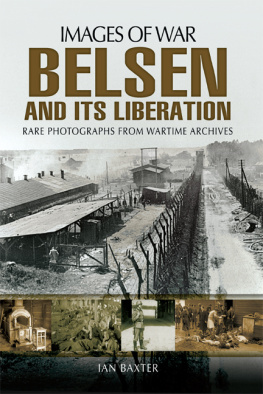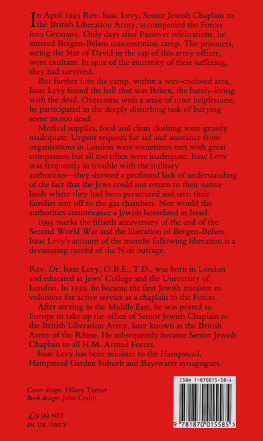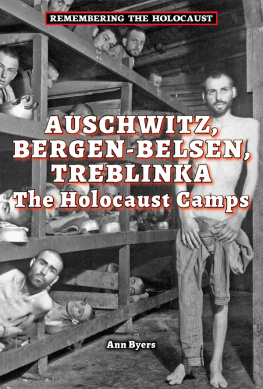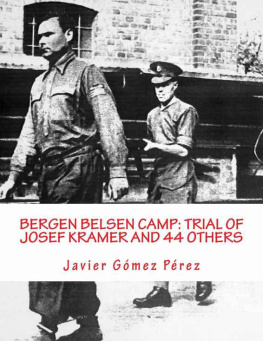Ben Shephard was born in 1948 and read History at Oxford University. He was a producer on the television series The World at War and The Nuclear Age and has made numerous historical and scientific documentaries for the BBC and Channel Four. He is the author of the critically acclaimed A War of Nerves: Soldiers and Psychiatrists 19141994 (published by Jonathan Cape and Pimlico). He lives in Bristol.
This eBook is copyright material and must not be copied, reproduced, transferred, distributed, leased, licensed or publicly performed or used in any way except as specifically permitted in writing by the publishers, as allowed under the terms and conditions under which it was purchased or as strictly permitted by applicable copyright law. Any unauthorised distribution or use of this text may be a direct infringement of the author's and publisher's rights and those responsible may be liable in law accordingly.
Ben Shephard has asserted his right under the Copyright, Designs and Patents Act 1988 to be identified as the author of this work
This electronic book is sold subject to the condition that it shall not by way of trade or otherwise, be lent, resold, hired out, or otherwise circulated without the publisher's prior consent in any form other than that in which it is published and without a similar condition including this condition being imposed on the subsequent purchaser
Random House UK Limited Reg. No. 954009
ILLUSTRATIONS
The main camp at Bergen-Belsen, ten days after the British arrival (Imperial War Museum).
German officers are led through British lines after negotiating a truce, 12 April 1945 (Imperial War Museum).
Josef Kramer is paraded in irons before being removed to the POW cage at Celle, 17 April 1945 (Imperial War Museum).
Lt. Colonel James Johnston, the British Army doctor in charge at Belsen, with Hadassah Bimko, Ruth Gutman and Captain 'Frosty' Winterbotham, 17 April 1945 (United States Holocaust Memorial Museum).
Luba Tryszynska, the 'Angel of Belsen', 26 April 1945 (Imperial War Museum).
Brigadier H.L. Glyn Hughes, mastermind of the Belsen relief effort (Wellcome Library, London).
A survivor picks over clothing, 17 April 1945 (Imperial War Museum).
The 'typhus hospital' at Belsen, 26 April 1945 (Imperial War Museum).
Inmates prepare a meal, 17 April 1945 (Imperial War Museum).
The overcrowded interior of one of the women's huts, 17 April 1945 (Imperial War Museum).
British soldiers supervise the distribution of food, 21 April 1945 (Imperial War Museum).
A bulldozer pushes bodies into a mass grave, 19 April 1945 (Imperial War Museum).
British Tommies force German soldiers to remove bodies of the dead (Wellcome Library, London).
Evacuation of the sick from Camp 1, 22 April 1945 (Imperial War Museum).
Women prisoners collect freshly baked bread, 24 April 1945 (Imperial War Museum).
Survivors being washed and disinfected by German nurses in the 'Human Laundry' (Wellcome Library, London).
Newly evacuated patients in a temporary 'ward' set up in one of the squares of the Panzer Training School, 27 April 1945 (Imperial War Museum).
A patient is treated in the new hospital, 25 April 1945 (Imperial War Museum).
Konrad Herschel, a thirteen year-old Czech boy, three months after the liberation, 20 July 1945 (Imperial War Museum).
A British soldier sprays a prisoner with DDT (Photograph by George Rodger Times Life Pictures/Getty Images).
British medical students shortly before their return to England, 25 May 1945 (Imperial War Museum).
Burgomasters of the neighbouring towns watch a mass burial for the benefit of Movietone News, 24 April 1945 (Imperial War Museum).
Dr Fritz Klein, 'the mad doctor of Belsen', posed in one of the mass graves, 24 April 1945 (Imperial War Museum).
Rabbi Leslie Hardman reads the kaddish over a mass grave at Belsen, 21 April 1945 (Imperial War Museum).
The last hut in Camp 1 is ceremonially burnt, 21 May 1945 (Imperial War Museum).
Leslie Hardman conducts an open-air service in one of the squares of the Panzer Training School, soon to become 'Belsen Displaced Persons Camp', 19 May 1945 (Imperial War Museum).
Two former inmates weep over one of the Belsen mass graves, 14 April 1946 (Imperial War Museum).
ACKNOWLEDGEMENTS
Working on this book, I was conscious of treading in the footsteps of such Belsen scholars as Eberhard Kolb, E.E. Vella, Paul Kemp, Joanne Reilly, A.-E. Wenck, and Elly Trepman. I would also like to pay particular tribute to the staff of three institutions who guided me through the mass of Belsen material. At the Imperial War Museum, Stephen Walton and Simon Robbins in the Department of Documents, Margaret Brooks in the Sound Archive, David Bell in the Photographic Archive, and Paul Sargent and Toby Haggith in the Department of Film; at the Gedenksttte Bergen-Belsen, Dr Thomas Rahe, Arnold Jrgens, Klaus Ttzler, Martina Staats and Karin Theilen; and at the Fortunoff Archive for Holocaust Video Testimonies, in Yale University Library, Joanne Rudof. It was an enormous privilege to be taken round the old Panzer Training School, now a NATO barracks, by Warrant Officer Graham Parmenter.
My thanks also to the American Friends Archive (Eleanora Golobic); BBC Archives; British Red Cross (Helen Pugh); JDC Archives, Jerusalem (Dr Sara Kadosh); JDC Archives, New York (Sherry Hyman and Shelley Helfand); London Library; Public Record Office/ National Archives; RAMC Museum (Alan Scadding); Somerville College, Oxford (Pauline Adams); the Tank Museum, Bovington; the United States Holocaust Memorial Museum; University of Bristol Library; Yad Vashem; YIVO Institute for Jewish History (Leo Greenberg).
For advice, recollections and permission to use material, I am indebted to Mrs Edith Baneth, Mr Victor Baneth, Mrs Anna Bergman, Dr Jonathan Bird, Professor David Cesarani, Dr Michael Coigley, Sir Richard Doll, Mrs Carolyn Drake, Mr John Edwards, Mrs Eva Fried, the Revd Chris Gonin, Sir James Gowans, Dr Peter Horsey, Mrs Anita Lasker-Wallfisch, Professor Paul A. Levine, Dr Alan MacAuslan, Ms Rowan MacAuslan, Mrs Mary Park, Dr Alex Paton, Mr Anthony Pitt-Rivers, Mr Menachem Z. Rosensaft, Dr John Seaman, Mrs Jean Smart and Dr Michael Wilson. Every effort has been made to trace and contact the copyright holders of all material used in this book. The author and publishers would be glad to rectify any omissions at the earliest opportunity.
On a project like this, friends' support matters. Peter Barham, Caroline Garland, Raye Farr, Hugh Freeman, Rhodri Hayward, Jemima Hunt, Kristina Jones, Chris Keil, Jair Kessler, Jerry Kuehl, Bernice Lerner, Catherine Merridale, Peter Romijn, Roger Smith, Derek Summerfield and Simon Wessely have all in different ways bolstered morale. Mark Harrison generously allowed me to see a copy of his


